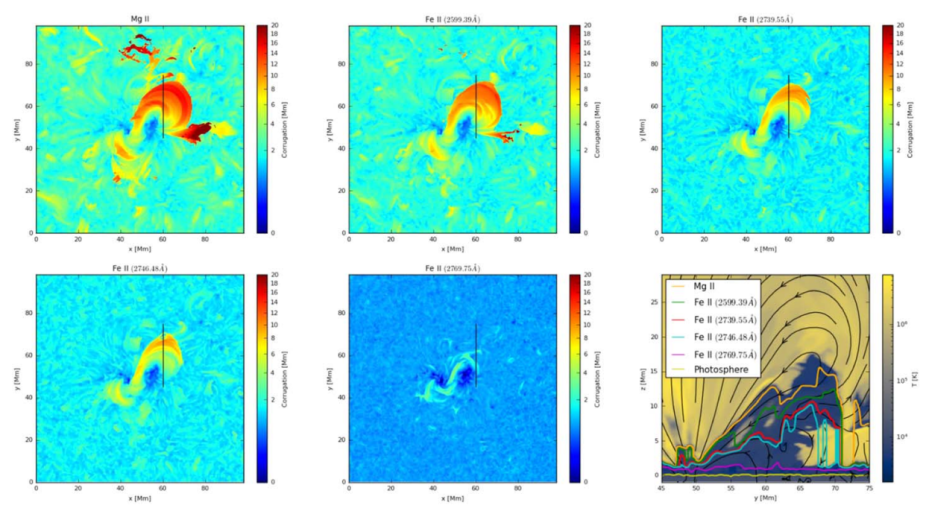Understanding the magnitude and occurrence of solar storms is key to predicting events that can be harmful to thousands of Earth-orbiting satellites and the welfare of astronauts. A recent paper by Philip Judge et al was highlighted in AAS Nova in a their featured article entitled, "A Better Space Weather Forecasting Tool."

Images to highlight the corrugated surfaces at which the centers of UV lines are formed (close to τ = 1) in MURaM calculations of the upper solar chromosphere. The calculations are from a numerical experiment where a magnetic flux system is emerging from beneath the solar atmosphere. The emergent fields carry with them plasma, which is revealed by the extended heights of the τ = 1 surfaces, which can exceed 10 Mm. Typically the Doppler line shifts in the lower transition region are smaller than the line widths (Athay & Dere 1991). Therefore the τ = 1 surfaces were computed without taking into account Doppler shifts, at the centers of lines of Mg ii k, and several lines of Fe ii. The x–y images of height of formation are plotted in order of decreasing opacity from Mg ii to Fe ii 2769.75 Å. In the bottom right panel, slices of these τ = 1 surfaces are shown, taken along the black line in the five other panels. But the black lines in this final panel are magnetic lines of force in the y–z plane. Evidently, a combination of these and other lines of iron with a wide range of opacities spans the ranges of excursions of the surfaces away from a horizontal plane.
Link to paper: Measuring the Magnetic Origins of Solar Flares, Coronal Mass Ejections, and Space Weather